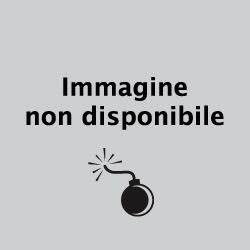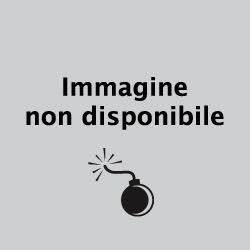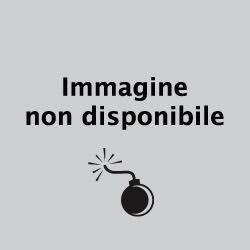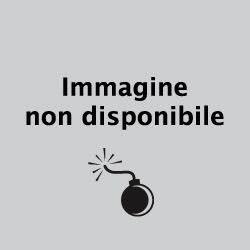Tuesday, December 24, 2013
Thursday, December 19, 2013
OFF THE RECORDS - Happy Christmas by Kim Wilde and Nik Kershaw! (together)
Kim Wilde interviewed by "The Observer"
You have a new album of Christmas songs, Wilde Winter Songbook. Is the festive theme connected to what happened last December, where a video of you wearing glittery reindeer ears singing on a commuter train went viral?
I never thought I could be as funny drunk as Delia Smith, but
apparently I am. But certainly the train incident helped spur me into
gear. I thought, well, if 2 million people want to see me drunk-singing
at Christmas, maybe they'd be up for a bit of sober action!
Were you really quite drunk then?
Twisted. I was absolutely larruped. I don't drink cocktails any more, so I didn't even think about the trouble I was getting myself into with these vodka and lychee liqueurs, or whatever they were, slipping down my neck. I just don't know how I got away with it. I still can't bring myself to watch it. Because initially it could have gone either way: it was either going to completely bury my career or not. And I seem to have gotten away with it.
On the new album, you have duets with Rick Astley and Nik Kershaw. Did you go out with any of your male contemporaries back in the 80s?
Yeah! Not many of them though. I did have a few delicious dates with Adam Ant once. I say delicious because the thought of it now, me, Kim Wilde at that time, and him, Adam Ant at that time, and both of us sitting in a restaurant eating chocolate mousse is a delicious memory. He looked after me for a little bit, took me out for some lovely meals in very swanky restaurants. I was still living in Hertfordshire at the time with my mum and dad.
Your first song, Kids in America, was a huge hit in 1981, but before that your younger brother, Ricky, was a teen heart-throb. How did you feel when it was him and not you who made the breakthrough?
I was happy for him, but I do remember thinking, not that it should be me, but that one day it will be me. I always had this strong sense of where my destiny lay, that I was going to be a singer. Not because my dad was Marty Wilde, it was just an absolute truth that I lived with from a very young age. Maybe a part of me was quite psychic, because we have strong psychics in my family, especially on my father's side.
Is there anything else you've predicted?
I am tuned into it, a little bit. I don't see ghosts and stuff, but I did see something very unusual in the sky once, which I can only say was a UFO. But there were lots of witnesses, it was in the local paper, it wasn't just me.
Was that at home in Hertfordshire?
If I told you, you'd just laugh at me, because everybody does! It was 26 June, the day after Michael Jackson died, and me and my mate were in the garden and we saw bright lights in the sky. I have to say there's not a day gone by that I don't think about what the hell it was. It was so huge, two of them, going zigzag for 10 minutes and I could feel the momentum and I knew it was really massive. It could be some very clever thing that someone developed somewhere, but I've got a feeling it wasn't.
In 1987, your cover of You Keep Me Hangin' On went to No 1 in America. Is it true that you never went there to follow it up?
We didn't, no. In retrospect, there was a missed opportunity, for sure. I'm not saying it would have happened and I'd have become like Madonna. But you never know... Madonna's career, for instance, you can see how much she wanted it. And I just didn't want it all the way and more, so I'll never know how big my career could have been. But I'm quite happy with the medium-size career I've had. I love the fact I can walk anywhere without bodyguards and jump into Tesco and buy the Christmas turkey.
Later on, Madonna became a near-neighbour of yours in the country. Did you ever discuss this with her?
No, I never met her, but I do remember thinking, this county ain't big enough for the both of us.
You supported Michael Jackson on his Bad tour in 1988. What was he like?
I only met him once to do a publicity photograph. I got taken into the den and there he was with the lights dimmed and then his "uncles" as I called them – these older men who seemed to control a lot of what was going on around him – they positioned me so I was looking in the right direction for the camera. We had our photograph taken and then I was gently persuaded to leave. So nothing very normal about that, but there you go. I really have no more insight into him than any person you'd ask on the street.
In the mid-1990s, you stopped making music. You got married, had two kids and became well known as a gardener. What inspired that?
It was a combination of things. I really wanted to have the chance to be something else that wasn't all about being Kim Wilde and running off pursuing success. I really wanted to have a family, I wanted to wake up with my old man and pick up his underpants and take the kids on the school run. That's basically what I wanted: to pick up my husband's underpants.
Was the gardening career as much of a surprise to you as it was to the rest of us?
No, it wasn't a huge surprise to me. I remember growing up watching The Good Life thinking, that's how you live life! As close to the earth as possible and away from all the bullshit.
So I tried to recreate The Good Life, I guess, with me as Barbara. It all turned out great and now I'm back in music and I'm happier than I've ever been.
You continue to have a lot of success abroad, but this is your first UK album for more than a decade. Should we expect more?
Well, I'll certainly be releasing more albums next year, whether in the UK or not. I hope people want to hear them here, but I won't force anything on them, I promise.
You have a new album of Christmas songs, Wilde Winter Songbook. Is the festive theme connected to what happened last December, where a video of you wearing glittery reindeer ears singing on a commuter train went viral?
Were you really quite drunk then?
Twisted. I was absolutely larruped. I don't drink cocktails any more, so I didn't even think about the trouble I was getting myself into with these vodka and lychee liqueurs, or whatever they were, slipping down my neck. I just don't know how I got away with it. I still can't bring myself to watch it. Because initially it could have gone either way: it was either going to completely bury my career or not. And I seem to have gotten away with it.
On the new album, you have duets with Rick Astley and Nik Kershaw. Did you go out with any of your male contemporaries back in the 80s?
Yeah! Not many of them though. I did have a few delicious dates with Adam Ant once. I say delicious because the thought of it now, me, Kim Wilde at that time, and him, Adam Ant at that time, and both of us sitting in a restaurant eating chocolate mousse is a delicious memory. He looked after me for a little bit, took me out for some lovely meals in very swanky restaurants. I was still living in Hertfordshire at the time with my mum and dad.
Your first song, Kids in America, was a huge hit in 1981, but before that your younger brother, Ricky, was a teen heart-throb. How did you feel when it was him and not you who made the breakthrough?
I was happy for him, but I do remember thinking, not that it should be me, but that one day it will be me. I always had this strong sense of where my destiny lay, that I was going to be a singer. Not because my dad was Marty Wilde, it was just an absolute truth that I lived with from a very young age. Maybe a part of me was quite psychic, because we have strong psychics in my family, especially on my father's side.
Is there anything else you've predicted?
I am tuned into it, a little bit. I don't see ghosts and stuff, but I did see something very unusual in the sky once, which I can only say was a UFO. But there were lots of witnesses, it was in the local paper, it wasn't just me.
Was that at home in Hertfordshire?
If I told you, you'd just laugh at me, because everybody does! It was 26 June, the day after Michael Jackson died, and me and my mate were in the garden and we saw bright lights in the sky. I have to say there's not a day gone by that I don't think about what the hell it was. It was so huge, two of them, going zigzag for 10 minutes and I could feel the momentum and I knew it was really massive. It could be some very clever thing that someone developed somewhere, but I've got a feeling it wasn't.
In 1987, your cover of You Keep Me Hangin' On went to No 1 in America. Is it true that you never went there to follow it up?
We didn't, no. In retrospect, there was a missed opportunity, for sure. I'm not saying it would have happened and I'd have become like Madonna. But you never know... Madonna's career, for instance, you can see how much she wanted it. And I just didn't want it all the way and more, so I'll never know how big my career could have been. But I'm quite happy with the medium-size career I've had. I love the fact I can walk anywhere without bodyguards and jump into Tesco and buy the Christmas turkey.
Later on, Madonna became a near-neighbour of yours in the country. Did you ever discuss this with her?
No, I never met her, but I do remember thinking, this county ain't big enough for the both of us.
You supported Michael Jackson on his Bad tour in 1988. What was he like?
I only met him once to do a publicity photograph. I got taken into the den and there he was with the lights dimmed and then his "uncles" as I called them – these older men who seemed to control a lot of what was going on around him – they positioned me so I was looking in the right direction for the camera. We had our photograph taken and then I was gently persuaded to leave. So nothing very normal about that, but there you go. I really have no more insight into him than any person you'd ask on the street.
In the mid-1990s, you stopped making music. You got married, had two kids and became well known as a gardener. What inspired that?
It was a combination of things. I really wanted to have the chance to be something else that wasn't all about being Kim Wilde and running off pursuing success. I really wanted to have a family, I wanted to wake up with my old man and pick up his underpants and take the kids on the school run. That's basically what I wanted: to pick up my husband's underpants.
Was the gardening career as much of a surprise to you as it was to the rest of us?
No, it wasn't a huge surprise to me. I remember growing up watching The Good Life thinking, that's how you live life! As close to the earth as possible and away from all the bullshit.
So I tried to recreate The Good Life, I guess, with me as Barbara. It all turned out great and now I'm back in music and I'm happier than I've ever been.
You continue to have a lot of success abroad, but this is your first UK album for more than a decade. Should we expect more?
Well, I'll certainly be releasing more albums next year, whether in the UK or not. I hope people want to hear them here, but I won't force anything on them, I promise.
Etichette:
Kim Wilde,
Nik Kershaw,
OFF THE RECORDS,
VIDEOKILLER
Monday, December 16, 2013
NEWS WAVE - Tutti a Roma, alla mostra sugli anni '80 "Dark Portrait"
 Articolo di Ernesto Assante (dal suo blog)
Articolo di Ernesto Assante (dal suo blog) C'è una bella mostra a Roma, alla s.t fotolibrearia di via degli
Ombrellari 25, si intitola Dark Portrait, con delle belle fotografie di
Dino Ignani. In quegli anni c'ero anche io, non ero dark ma
frequentavo i club della Capitale dove si muoveva la scena della new
wave romana, dal Uonna al Murales, dal Black Out all'Olimpo, dalle
serate Danceteria all'Executive a quelle dei Piper, dal videobar di
Corso Vittorio del quale ora mi sfugge il nome all'Hemingway di piazza
delle Coppelle, all'X e Metal X di via Rasella e molti altri posti
ancora. Era una scena vivacissima, con tante nuove band, molti artisti di
ogni genere, tantissimi "pretenders", ragazzi ognuno con il suo stile,
la sua personalità, la sua storia. E' stata una stagione fantastica che
Dino Ignani, all'epoca, fotografò con costanza. Molte facce le ricordo
perfettamente, alcuni sono ancora miei amici, molti altri li avevo
dimenticati e li rivedo con affetto. Sono centinaia di ritratti,
raccolti anche in un bel catalogo. E il tutto fa parte di un festival
interessante, Fotoleggendo.
C'è una bella mostra a Roma, alla s.t fotolibrearia di via degli
Ombrellari 25, si intitola Dark Portrait, con delle belle fotografie di
Dino Ignani. In quegli anni c'ero anche io, non ero dark ma
frequentavo i club della Capitale dove si muoveva la scena della new
wave romana, dal Uonna al Murales, dal Black Out all'Olimpo, dalle
serate Danceteria all'Executive a quelle dei Piper, dal videobar di
Corso Vittorio del quale ora mi sfugge il nome all'Hemingway di piazza
delle Coppelle, all'X e Metal X di via Rasella e molti altri posti
ancora. Era una scena vivacissima, con tante nuove band, molti artisti di
ogni genere, tantissimi "pretenders", ragazzi ognuno con il suo stile,
la sua personalità, la sua storia. E' stata una stagione fantastica che
Dino Ignani, all'epoca, fotografò con costanza. Molte facce le ricordo
perfettamente, alcuni sono ancora miei amici, molti altri li avevo
dimenticati e li rivedo con affetto. Sono centinaia di ritratti,
raccolti anche in un bel catalogo. E il tutto fa parte di un festival
interessante, Fotoleggendo. Nei video-bar e nelle discoteche dell'epoca, specialmente di Roma
(dal Black Out all'UonnaClub all'intramontabile Piper), ma anche in
feste private, Ignani predisponeva un set preferibilmente neutro e
invitava i presenti a farsi ritrarre. Il risultato del progetto
-iniziato nel 1982 e terminato tre anni dopo- è una galleria di
quattrocento immagini in bianco e nero, selezionate e riproposte per la
prima volta in una mostra che intende valorizzare l'originaria vocazione
seriale del progetto e rintracciarne le più ampie implicazioni
descrittive.
Nei video-bar e nelle discoteche dell'epoca, specialmente di Roma
(dal Black Out all'UonnaClub all'intramontabile Piper), ma anche in
feste private, Ignani predisponeva un set preferibilmente neutro e
invitava i presenti a farsi ritrarre. Il risultato del progetto
-iniziato nel 1982 e terminato tre anni dopo- è una galleria di
quattrocento immagini in bianco e nero, selezionate e riproposte per la
prima volta in una mostra che intende valorizzare l'originaria vocazione
seriale del progetto e rintracciarne le più ampie implicazioni
descrittive.Dietro una rappresentazione standardizzata e apparentemente distaccata di quel mondo, si nasconde infatti l'esigenza del fotografo di cogliere le specificità individuali e la trama creativa dei nuovi stili di vita. Ignani si dedica a registrare e a valorizzare i minimi dettagli e i segni distintivi del popolo dark: il trucco, gli accessori e le acconciature sono i grandi protagonisti delle immagini, e sono gli stessi elementi che successivamente, come spesso accade, saranno riassorbiti dal mondo della moda.
 Alla mostra si accompagna la pubblicazione di un libro curato dalla
galleria s.t.. Non un semplice catalogo, ma un progetto editoriale che
punta ad abbinare le immagini a testi di matrice diversa. Oltre
all'articolo di D'Agostino, scritto nel 1985 per la rivista "Rockstar",
viene riproposto un racconto dello scrittore Emanuele Trevi, apparso
sulle pagine romane de "La Repubblica", che vede come protagonista un
adolescente romano di ritorno dal suo viaggio iniziatico a Londra: Un
punk sulla spiaggia di Ostia.
Alla mostra si accompagna la pubblicazione di un libro curato dalla
galleria s.t.. Non un semplice catalogo, ma un progetto editoriale che
punta ad abbinare le immagini a testi di matrice diversa. Oltre
all'articolo di D'Agostino, scritto nel 1985 per la rivista "Rockstar",
viene riproposto un racconto dello scrittore Emanuele Trevi, apparso
sulle pagine romane de "La Repubblica", che vede come protagonista un
adolescente romano di ritorno dal suo viaggio iniziatico a Londra: Un
punk sulla spiaggia di Ostia.Concepiti per l'occasione sono invece il testo della giornalista de "L'Unità" Daniela Amenta -un commosso ma anche spiritoso amarcord sull' "avere vent'anni trent'anni fa", e quello di Paola Paleari -curatrice con Matteo Di Castro del progetto- la quale riconduce la lettura delle immagini e dell'immaginario di quell'epoca al contesto attuale.
Friday, December 6, 2013
Subscribe to:
Comments (Atom)
Memories fade
"Memories fade but the scars still linger,
I cannot grow,
I cannot move,
I cannot fell my age,
The vice like grip of tension holds me fast,
Engulfed by you,
What can I do,
When history’s my cage...
Look foward to a future in the past".
